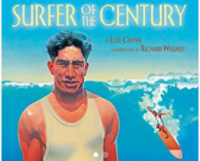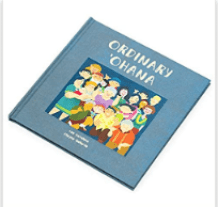
We are delighted to have the aweome Leslie Bulion with us today to talk about her book:
Get to know all about the best and brightest―and smelliest!―birds in Leslie Bulion’s award-winning collection of avian science poetry. You won’t even need binoculars!
★ “Fascinating.”―Booklist, STARRED REVIEW
★ “In works such as Superlative Birds, the collaboration of poetry and science invites children of varying reading preferences, learning styles, and worldviews to enter nature study through their own chosen door.” ―The Bulletin of the Center for Children’s Books, STARRED REVIEW
★ “Entertaining and educational, a superlative package.” ―Kirkus Reviews, STARRED REVIEW
Leslie, thanks for joining us today. please tell us about your book, Superlative Birds:
Thanks for inviting me to STEM Tuesday, Jen! SUPERLATIVE BIRDS (Peachtree 2019) takes readers on a funny, poetic tour of the important characteristics of “birdness,” such as feathers, eggs, nests, wings, and bills, plus behaviors like courtship and bird parenting using a “best of the bird world” representative for each trait. A chatty chickadee appears in each spread to help readers meet a challenge offered in the introductory poem: which of these traits belong only to birds? This is the second of four critter poetry collection collaborations with illustrator Robert Meganck, whose work is superlatively funny and accurate!
You wrote this book and many of your others in verse, which is so amazing. Why do you choose to write in this format?
I love the challenge of communicating one cool science story in a succinct way using the music and wordplay of poetry. I am a lifelong learner; writing science poetry allows me to learn about a subject of interest, and to learn more about poetry as I explore and choose different forms for each of the poems.

In my poems, I’m not sharing everything there is to know about birds (or amphibians, or spiders, or human body parts, or…). I also don’t share everything about any particular bird—that wouldn’t make for a fun or interesting poem. I try to hone the science story I’ll tell to one elegant nugget. For example, in my poem about the world’s smallest bird, the bee hummingbird, I talk about its size, mention what it eats, and describe the pattern its wingbeats make (figure-eight). That’s it! I try to keep the poems’ accompanying expository notes fairly concise as well, which is much harder!
There are so many different birds in this book. What kind of research did you do?
I always start with two approaches: reading widely and some kind of hands-on experience. For SUPERLATIVE BIRDS, I read general books and articles about birds and bird behavior and pored over field guides. I took a week-long summer course at Cornell Laboratory of Ornithology where I met  ornithologists and expert birders who became my expert readers. I asked a LOT of questions, including “which bird do YOU think is the best, and why?” Once I figured out the structure and organization of the book, and the “world record-holders” hook, I researched animal world records and unusual birds, and continued to read recent articles in science magazines and journals to see which birds scientists were studying and why. I also contacted researchers for further information. There’s always something new in science! While reading recent research on emperor penguins (deepest diver) I learned they had the most feathers of any bird, something researchers had discovered while taking an unexpected opportunity to look at feather density. I had read many references to the tundra swan being the world record-holder for most feathers but it had just been dethroned!
ornithologists and expert birders who became my expert readers. I asked a LOT of questions, including “which bird do YOU think is the best, and why?” Once I figured out the structure and organization of the book, and the “world record-holders” hook, I researched animal world records and unusual birds, and continued to read recent articles in science magazines and journals to see which birds scientists were studying and why. I also contacted researchers for further information. There’s always something new in science! While reading recent research on emperor penguins (deepest diver) I learned they had the most feathers of any bird, something researchers had discovered while taking an unexpected opportunity to look at feather density. I had read many references to the tundra swan being the world record-holder for most feathers but it had just been dethroned!
Why do you choose to write STEM/STEAM books? Is it in your background?
I have been interested in science for as long as I can remember. I wrote a poem back in fourth grade encouraging readers to take a closer look at critters living “under the grass,” something I did myself 50 years later in LEAF LITTER CRITTERS (Peachtree 2018)! I did a semester at sea in during my undergraduate studies, and earned a Master’s degree in Biological Oceanography after that. I was inspired to start writing science poetry on the heels of taking a summer course (just for fun) called “The Way Bugs Work.”
Do you have any tips for writers who might want to write science poetry?
I think we all do our best work when we’re writing about something we find fascinating. I read current science every day. There’s always a note I’ll squirrel away in an idea file or follow on a happy hunt into the weeds. I collect all of the information I can, and then I whittle. For me, science poetry involves whittling a stick until you make a whistle (or a flute) that calls the read over—Hey! Check this out!
What is your newest book?
Thanks for asking! SERENGETI: PLAINS OF GRASS (Peachtree, March 1, 2022) follows the great migration of wildebeests, zebras, gazelles and others into and out of Tanzania’s Serengeti short-grass plain as the first rains bring new grass growth to feed the herd. Migrating animals interact with resident animals in this moving ecosystem. Unlike my other science poetry books, SERENGETI is all the same form of poetry throughout, one stanza connecting to the next as readers follow energy though the food web from herbivores to insectivores, carnivores, and recyclers before the herd moves on, following the rains west. The form is an adaptation of a Swahili stanza called the utendi.
migration of wildebeests, zebras, gazelles and others into and out of Tanzania’s Serengeti short-grass plain as the first rains bring new grass growth to feed the herd. Migrating animals interact with resident animals in this moving ecosystem. Unlike my other science poetry books, SERENGETI is all the same form of poetry throughout, one stanza connecting to the next as readers follow energy though the food web from herbivores to insectivores, carnivores, and recyclers before the herd moves on, following the rains west. The form is an adaptation of a Swahili stanza called the utendi.
Thanks so much for taking the time to speak with us today, Leslie. You can learn more about Leslie and her other amazing books HERE
Leave us a comment about your favorite book about birds! Go STEM/STEAM!



















